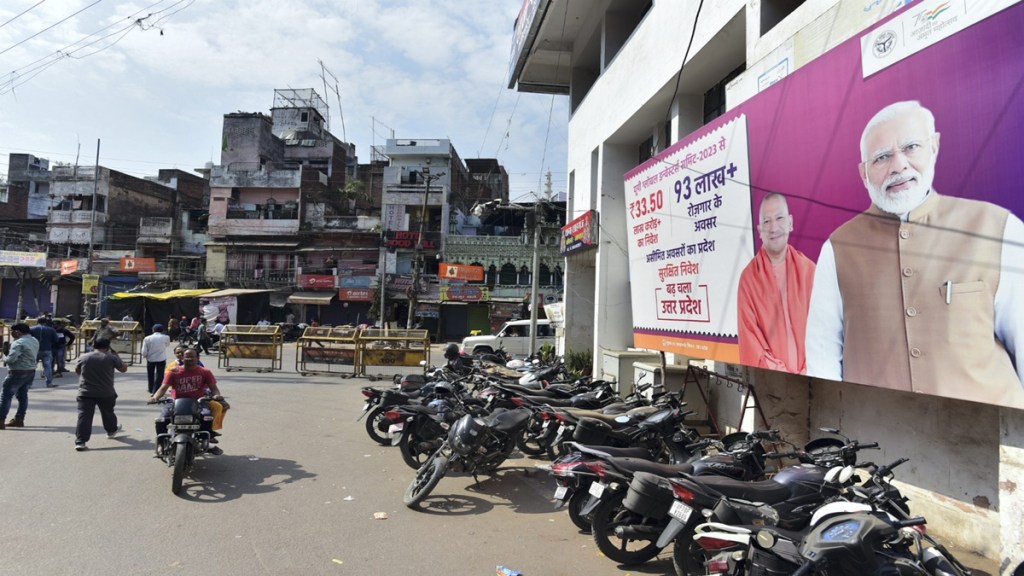The Constitution of India was in the making for over two years and it came into effect on January 26, 1950. It was the product of the collective wisdom of the Constituent Assembly which was reasonably, though not fully, representative of the people of India. In popular imagination, the Constitution’s soul is attributed to Babasaheb Ambedkar.
The Indian Penal Code — the backbone of the body of criminal laws of India — was made in 1860 during British rule. It has passed the test of many British-made ‘basic laws’ and the Constitution of India; it has also survived many amendments. The companion laws are the Indian Evidence Act, 1872 and the Code of Criminal Procedure, 1973. All three laws were passed by the central legislature/Parliament and can be amended or added to by the state legislature.
Also read: Across the aisle by P Chidambaram: Law may stumble, justice will triumph
What is law & order?
Under the Constitution, the subjects of ‘criminal law’ and ‘criminal procedure’ are included in the Seventh Schedule, List III—Concurrent List. However, the subject of ‘public order’ that includes ‘law and order’ is allotted to the state legislature under List II—State List. Executive power in relation to public order is also vested in the state government (Article 162). Such a power carries with it a duty to enforce the law which means applying the laws, preventing the violation of the laws, apprehending suspects, investigation, prosecution, and securing conviction and punishment of the accused — in accordance with law and lawful orders.
Recent events have given rise to the suspicion that the phrase ‘law and order’ may have been infused with perverse meanings. It seems ‘law’ is no longer enacted law, it is ‘law’ as undersood and applied by the law enforcers. Further, ‘order’ no longer means a lawful order, but includes oral or non-verbal instructions issued by persons who have assumed arbitrary power. Whenever ‘law and order’ is invoked, I am tempted to ask ‘Which law? ’ and ‘Whose order?’.
Universal principles
Law is premised on certain universal legal and moral principles. World-wide, in democratic countries, the following presumptions in law are considered inviolable:
* Every person is presumed innocent until proven guilty in a court of law.
* No person shall be deprived of his life or personal liberty except according to procedure established by law (Article 21).
* Criminal law is written law: it Includes laws creating offences and laws laying down the procedure for registration, investigation, prosecution, trial of offences and punishment therefor.
* The accused must be tried in an open court of competent jurisdiction.
* The accused has the right to defend himself and plead his case in person or through a pleader.
* The Prosecutor is an officer of the court and must fairly disclose all the material, whether they are in favour of the investigating agency or in favour of the accused.
* The Judge alone has the jurisdiction to determine whether the accused is guilty of the offence or not and, if found guilty, to impose a punishment.
Also read: Across the aisle by P Chidambaram: Prosecutor, jury and judge
If these universal principles are not observed, could it be called a country governed by the rule of law? Some countries follow the system ‘show me the person and I’ll show you the rule’. It is a system where there is no rule of law but it is claimed there is rule by law and that is sufficient. Under that system, the law may be different from person to person, case to case, and even day to day. The stark difference between rule of law and rule by law is self-evident; yet, increasingly, the difference is either deliberately not noticed or is being erased. On orders that may — or do — violate the law, many errant law-enforcing officers adopt the Adolf Eichmann justification, Befehl ist Befehl (command is command).
Acts of impunity
Enough of legal philosophy. Let’s face the hard reality.
* Pehlu Khan, a dairy farmer, was transporting cattle bought at a fair. He was assaulted by cow vigilantes on the Jaipur-Delhi highway. The attack was captured on video. He died in the hospital.
Two years later, the six accused persons were acquitted giving them the benefit of doubt. Moments later, their supporters raised slogans of ‘Bharat Mata Ki Jai’.
* Over 300 incidents of attacks on Christian churches and prayer meetings have been reported every year from Odisha, Uttar Pradesh, Jharkhand, Chhattisgarh, Gujarat, Karnataka, etc. According to ANI, after an UP law of 2020 against conversion came into force, 507 persons have been accused of ‘conversion’ but none convicted so far.
* Accusing Muslim men of luring and trapping Hindu women into marrying them, cases of ‘love jihad’ have been filed across many states. In February 2020, MoS (Home) told Parliament that ‘love jihad’ is not defined under the law and no such case has been reported by any of the central agencies. In December 2022, the Vishwa Hindu Parishad released a list of 400 so-called love jihad cases.
* On March 26, Atiq Ahmed, a prisoner accused of many crimes, shouted to journalists that he would be killed in an ‘encounter’. On April 16, Atiq Ahmed and his brother, Ashraf, were killed while being escorted by the police to a hospital in Allahabad (Prayagraj). The assailants shouted Jai Shri Ram, threw down their guns and surrendered. A week earlier, Atiq Ahmed’s son was killed in an ‘encounter’ with the UP police. According to The Indian Express, it was the 183rd encounter after Mr Adityanath became chief minister of Uttar Pradesh. Many people said that ‘god had delivered justice’.
Which law authorised such killings, attacks and excesses? Under whose orders were the victims killed or churches attacked or cases filed against couples? And finally, why bring Bharat Mata, Lord Ram and god into the seemingly inexorable perversion of the rule of law?


